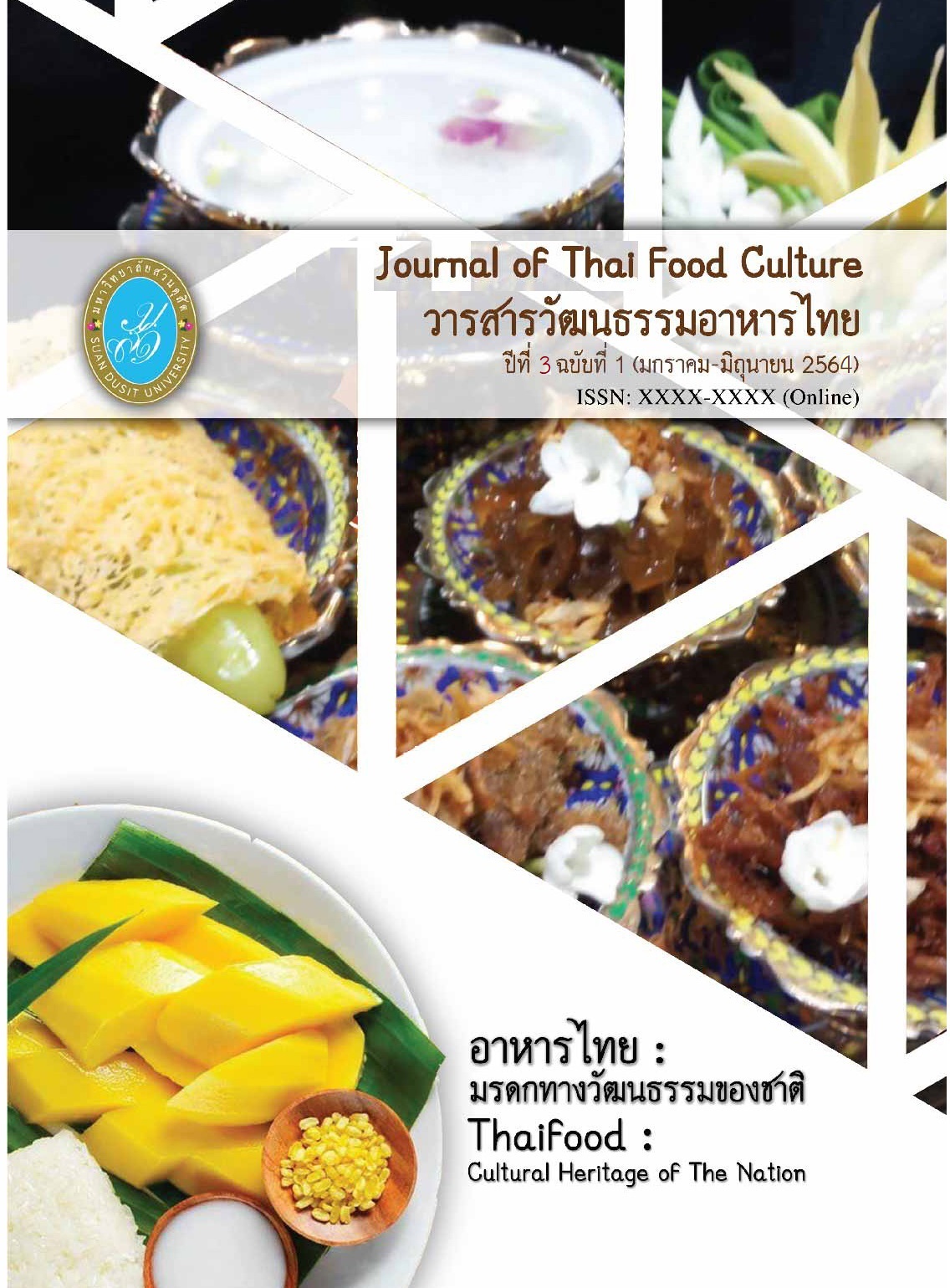Development of fresh noodles with kale juice for early childhood
Abstract
The objectives were to study the basic formula for fresh noodles production and to study the quantity of kale juice suitable for fresh noodles production. In experimenting this the 5-Point Hedonic Scale Test was applied to evaluate the sensory quality. As for the outcomes, basic noodle recipe No. 5 which contained all-purpose wheat flour, salt, sodium bicarbonate, clean water received the highest overall average index from food experts/culinary-skilled teachers. To expand the scope of the study, based on the panelists’ tried and tasted result and acceptance…the most suitable concentrated amount of kale juice used to replace the amount of clean water in noodles was at 40% concentration of the total 100% water weight when compared to 20% and 60% experimented in making kale-fortified noodles products with the mean of appearance, color, smell, taste and overall liking of 3.12±0.82, 3.46±0.89, 3.46±0.86, 3.48±. 0.91 and 3.24±1.15 respectively with majority of the averages were moderately like to really like categories. To sum up, the means average priorities with regard to satisfaction were moderate like to like. As a key data-collecting method, the questionnaires surveyed with early childhood children and their parents’ satisfaction indicate the satisfactory number came out to be 4.18, which implies to highly satisfied level.
Downloads
Published
How to Cite
Issue
Section
License
Copyright (c) 2021 Suan Dusit School of Culinary Arts

This work is licensed under a Creative Commons Attribution-NonCommercial-NoDerivatives 4.0 International License.
ลิขสิทธิ์ต้นฉบับที่ได้รับการตีพิมพ์ในวารสารวัฒนธรรมอาหารไทย ถือเป็นกรรมสิทธิ์ของโรงเรียนการเรือน มหาวิทยาลัยสวนดุสิต ห้ามผู้ใดนำข้อความทั้งหมดหรือบางส่วนไปพิมพ์ซ้ำ เว้นแต่จะได้รับอนุญาตอย่างเป็นลายลักษณ์อักษรจากโรงเรียนการเรือน มหาวิทยาลัยสวนดุสิต นอกจากนี้ เนื้อหาที่ปรากฎในบทความเป็นความรับผิดชอบของผู้เขียน ทั้งนี้ไม่รวมความผิดพลาดอันเกิดจากเทคนิคการพิมพ์


